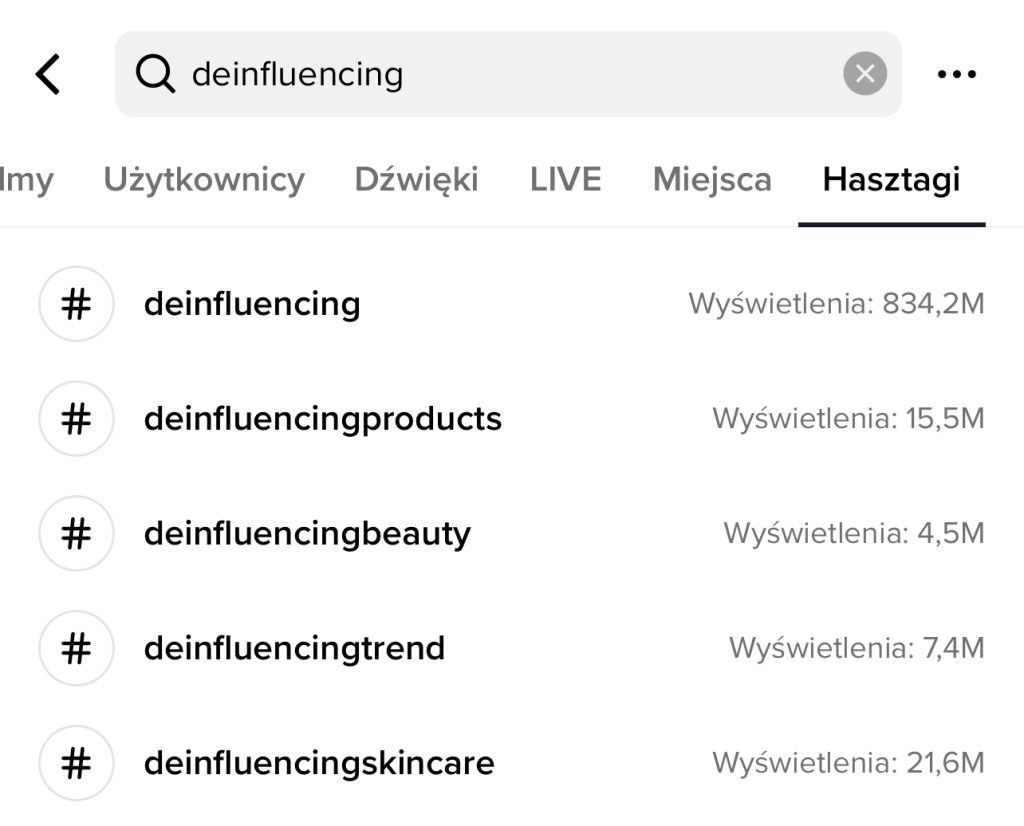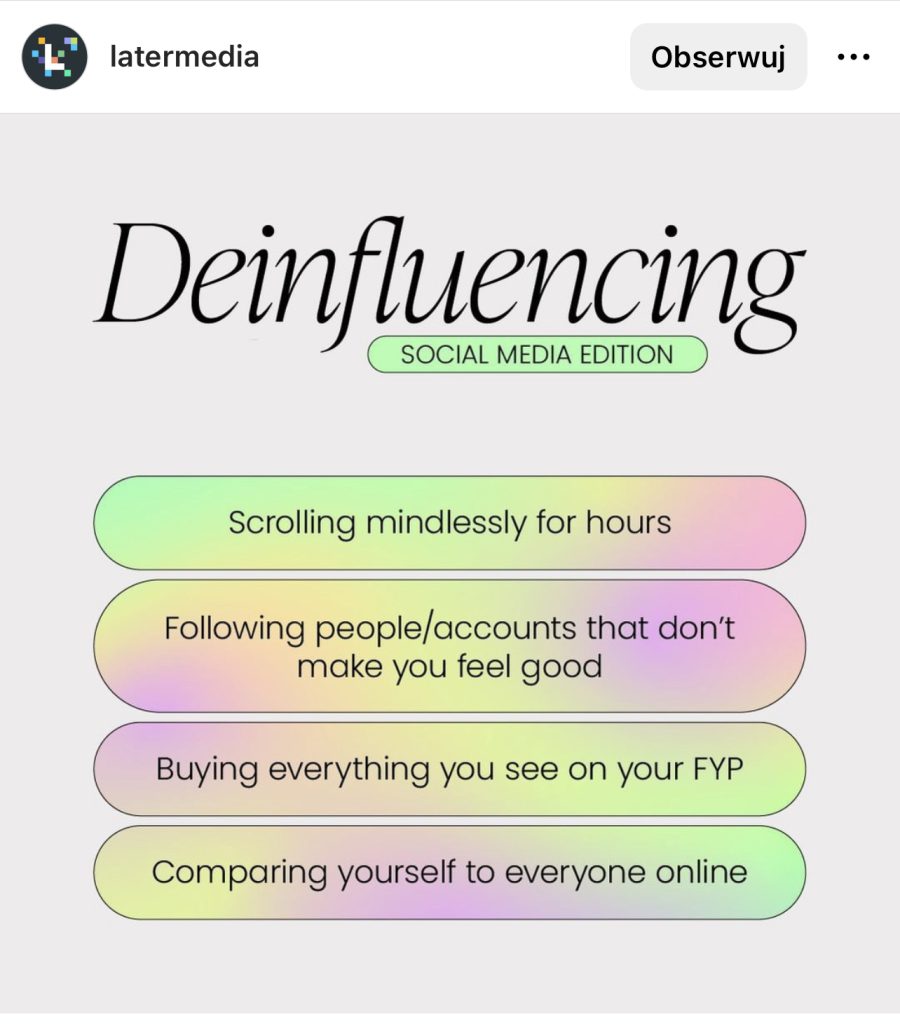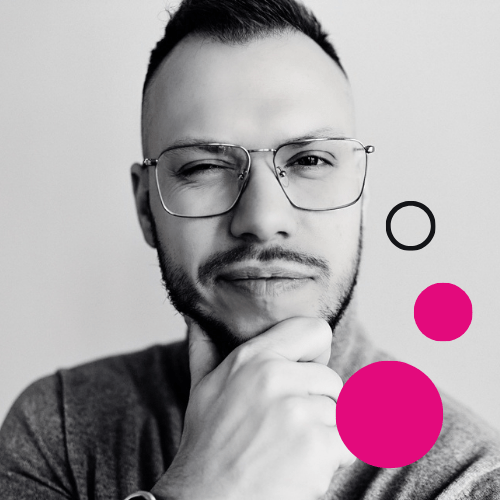The deinfluencing trend coincided with the MascaraGate scandal. One influencer, attempting to highlight the effect of a mascara in a promotional video, wore false lashes—misleading her audience. She was exposed, which led to negative consequences for both the brand and the influencer. This incident revealed dishonest practices and prompted some consumers to reflect on how, why, and what they purchase.
From the beginning, TikTok has been the main platform for deinfluencing, and the trend has not spread to other channels. Earlier this year, TikTok registered several million uses of the hashtag #deinfluencing, and now this number has reached hundreds of millions! By comparison, Instagram has only slightly over 5,000 posts under this hashtag.

Initially, the focus in posts and stories was on encouraging people not to buy expensive brand products. Influencers would (and still do) recommend cheaper alternatives with similar ingredients or effects. This communication style is especially popular in the United States. However, deinfluencing has become much more than just about purchasing decisions—it has evolved. The trend now extends beyond shopping and encourages:

In the United States, online creators are boldly calling for boycotts of specific brands, tagging their profiles without hesitation. Most often, this criticism discourages purchasing specific products (and suggests cheaper alternatives) or boycotting a brand entirely if it engages in dishonest business practices.
Here are six examples of such actions:
@your.richbff tries to convince people not to buy certain expensive products from brands featured in her posts. Another creator, @michellehasaspendingproblem, regularly reviews products, sharing items she believes are unnecessary. Similarly, @kiacyntrice focuses on items like school supplies that might not be essential.
The influencer behind @livekindly (middle screenshot) advises against shopping on the e-commerce platform „Temu,” pointing out its poor environmental practices.
In Poland, the deinfluencing trend also exists, but at a smaller scale and with a slightly different focus. Here, creators primarily concentrate on smart shopping and eco-friendly living. Below are examples from three selected creators:
On the profile @rozsadne_zakupy, you’ll find plenty of information highlighting that brand isn’t the most important factor—quality is, and high quality doesn’t always come with a high price. The @czytametykiety profile follows a minimalism approach to shopping. In a post visible on the screenshot, the author shares what and why she has stopped buying—her perspective might surprise some or provide a strong incentive for change. Meanwhile, the @rabat.alert profile shows how to spend money wisely on various services, offering cheaper options and saving time searching for discounts, coupon codes, or poorly communicated promotions.
I came across an article online with which I fully agree: “De-influencing is still… influencing.” Whether the goal is to save money or spend it more wisely, it still involves the influence of social media creators on our final purchasing decisions. So, does this type of communication make sense?
Deinfluencing from the Consumer’s Perspective:
Deinfluencing from the Brand’s Perspective:

O AUTORZE
Growth Manager z zacięciem do influencer marketingu. W Yetiz odpowiada za szukanie nowych szans rozwoju dla klientów. Prywatnie tata dwójki synów, były lekkoatleta i aktualny fan piwa kraftowego.
© 2024 YETIZ INTERACTIVE Created with ♡ by Yetiz
PRIVACY BELEID